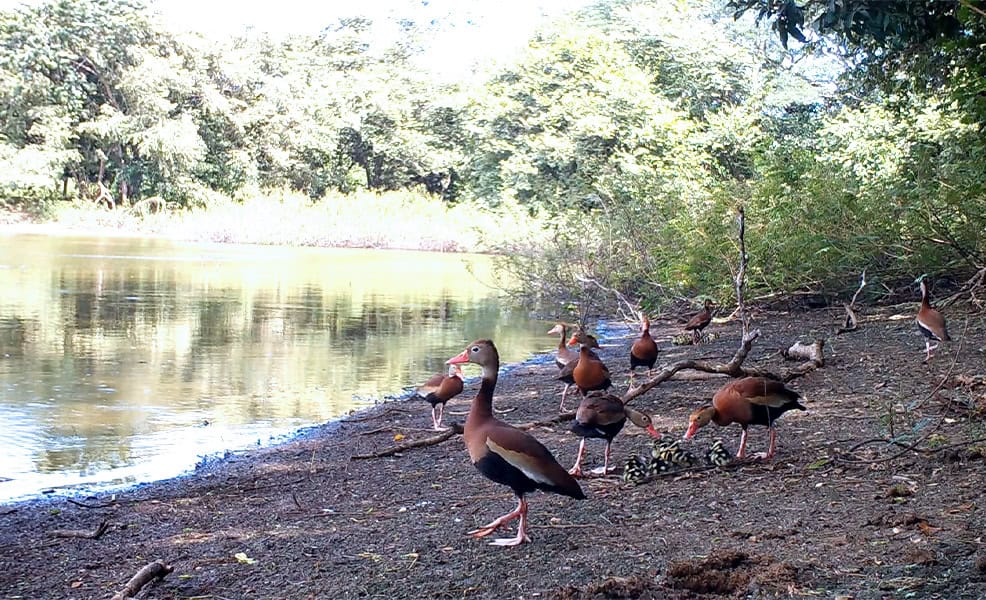Today we meet the black-bellied whistling-duck, a noisy, gregarious species of duck that might eat all of your rice. The black-bellied whistling-duck (Dendrocygna autumnalis) is known as the piche or pijije in Tico Spanish. They have long necks and legs, their feathers are a combination of brown, black and white, and they have a bright pinkish-orange beak.
In Costa Rica, they’re found throughout much of the country in lower elevations. They are particularly common in the Tempisque basin and the Río Frío area because those areas have a lot of the habitat that they prefer including freshwater marshes, wet pastures, ponds, and shallow lagoons. The ideal location for them would also include a few stands of trees because they often perch and nest amongst the branches.
Black-bellied whistling-ducks could have easily been named black-bellied screaming-in-unison-ducks because there’s often a mess of them together and when the whole group takes flight, they do a lot of screaming. Their whistle/scream, often written out as ‘wi-CHEE-chi-chee!’ or ‘pipi-CHEE-chee!’, can often be heard as they fly overhead in the evening hours.
I can also tell you from experience that you can frighten a huge group of them into the air upon your arrival at a forested pond, and they will scream some combination of ‘chees!’ and ‘Pis!’ while whipping around in a circle like a bird-tornado, eventually settling into some nearby trees, waiting for you to leave the premises.
These birds, which often feed nocturnally, are mostly herbivorous, on the hunt for the seeds, leaves, and shoots of wetlands vegetation. Though the vegetarian side of the menu makes up the majority of their diet, they will also eat a small number of mollusks and insects.
Their herbivory can run afoul of the humans that they share their environment with when large groups of them descend upon sprouting rice fields. I found a document published by the University of Costa Rica that includes them amongst the list of harmful birds of Costa Rica as far as agriculture goes, because they are ‘a serious pest for rice crops, mainly when rice is emerging.’
Both the male and female black-bellied whistling-duck play a large part in bringing the next generation of whistling-ducks into the world. Both sexes, which form a long-lasting monogamous pair-bond, participate in incubating and raising the ducklings. There can be quite a number of ducklings to look after. I’ve recorded videos of a male and female pair with over 20 ducklings wobbling behind them.
I see and hear black-bellied whistling-ducks frequently in the wild. They regularly fly over my house in the evening, whistling away. I come upon large flocks of them in the field checking camera traps when I’m working in sugarcane plantations or in forests with lakes or ponds.
I often try to sneak up to ponds in forested areas, hoping to see a rare creature in the water, but all hope of sneaking up on anything is destroyed when I frighten an explosion of whistling-ducks into the air. I record them fairly regularly with my camera traps. My favorite videos are adults with a bunch of ducklings. I’ll share a few of those clips in the video below.
About the Author
Vincent Losasso, founder of Guanacaste Wildlife Monitoring, is a biologist who works with camera traps throughout Costa Rica. Learn more about his projects on facebook or instagram. You can also email him at: vincent@guanacastewildlifemonitoring.com






